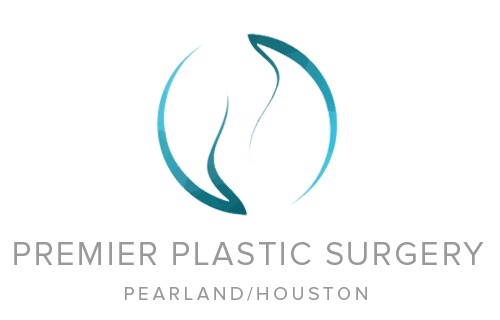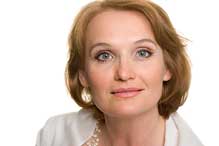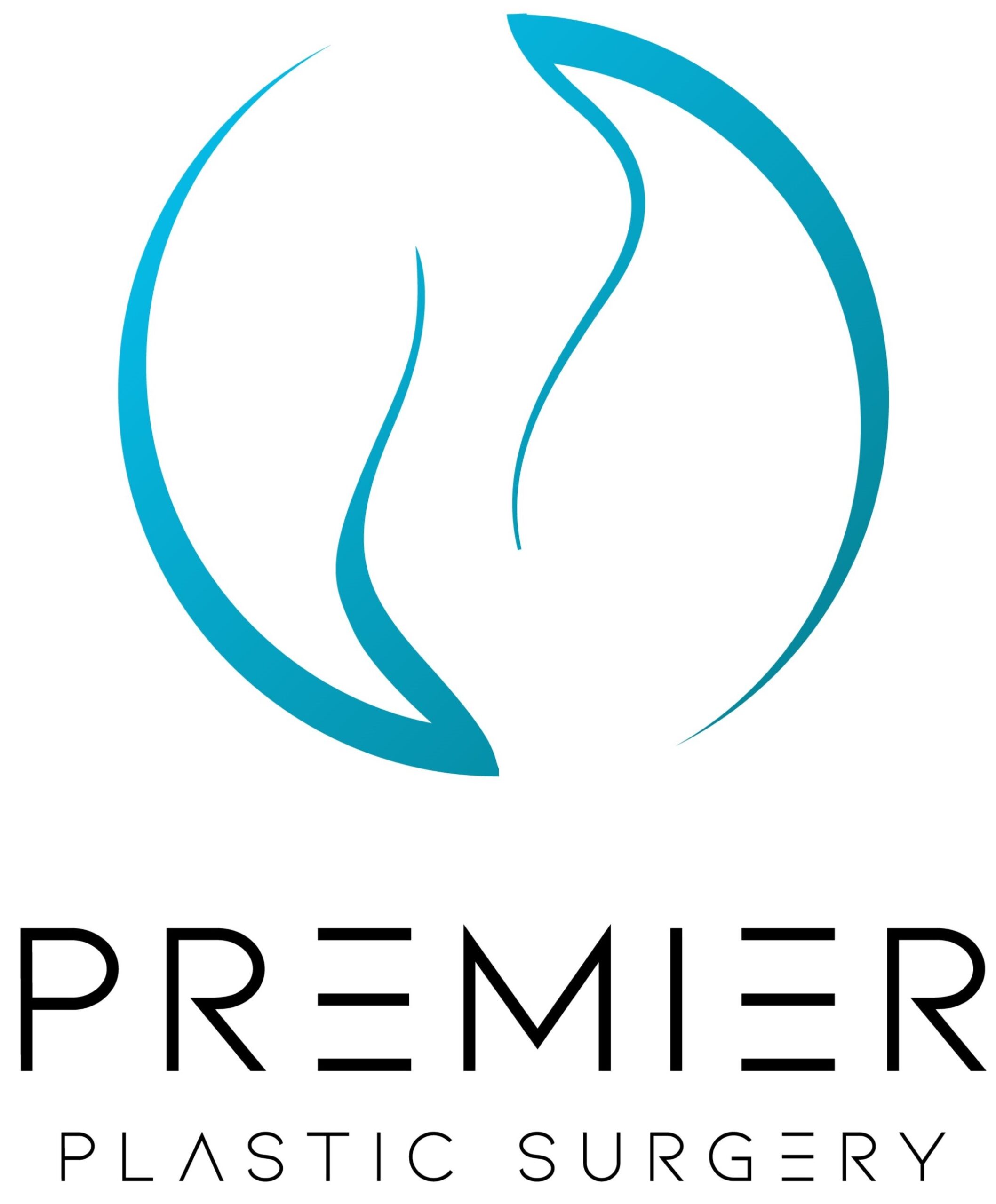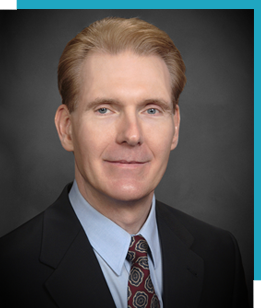
Facelift in Houston, TX
We all have to get older – but we don’t have to necessarily look older. Premier Plastic Surgery provides natural-looking facelifts with or without surgery. Dr. Christopher Hankins is a well-known expert in improving the appearance of sagging skin on the face, an aging neck, and excess fat around the eyelids for residents in and around South Houston, including Houston, Pearland, and throughout Lake Jackson. He has lectured about facelift surgery at the IMCAS meeting held annually in Paris, France, and at the first International Plastic Surgery Meeting held in Venice, Italy.

You may be one of many women or men who would like to get back your youthful appearance. You desire your face to enhance your natural contours and hide any signs of aging! At Premier Plastic Surgery, Dr. Hankins offers his patients many facelift options to reverse the aging process in their facial and neck compositions, bringing them their desired facelift results. One of the most popular cosmetic surgical procedures is the traditional facelift.
What is a Facelift?
As we age, our facial characteristics change due to the effects of gravity, signs of aging, sun exposure, and facial fat. In addition, all elements of the face experience atrophy, including our bone structures, excess fat, and loose skin, resulting in an overall deflation of the face and the appearance of sagging skin on a shrunken, bony frame. Facelifts are also an option for individuals recovering from a facial nerve injury in which case facial rejuvenation surgery will help them regain their lives before the trauma. Your board-certified surgeon may have you undergo a physical exam before you are considered a candidate for cosmetic surgery.
A facelift is a popular form of plastic surgery that can restore a more youthful-looking face, eliminate loose neck skin, create a chic brow lift, and hide facial aging.
Am I a Candidate for Facelift Surgery?
Dr. Hankins stresses that the primary objective of facelift surgery is the restoration of the Ogee curve of the face that is seen in youth.
In youth, the face has the overall shape of an inverted triangle, with the base of the triangle being the malar eminence supported by the malar fat pad. With aging, the inverted triangle of youth slowly changes to an upright triangle due to deflation and descent of the fatty tissue of the face, as well as the malar fat pad. The results are:
- Exposure of the outline of the lower orbit and the appearance of lengthening of facial muscles
- Formation of the nasolabial folds or parentheses lines (as advertised in Juvéderm® commercials).
- Lack of fullness in the malar area and the appearance of jowls
The three primary procedures employed for the purpose of facial reconstructive surgery are forehead lift (coronal, endoscopic, or hairline), facelift or rhytidectomy (nose job), and, neck lift or platysmaplasty.
Types of Facelifts
Dr. Hankins advises his patients that there are a number of different facelift procedures. The detailed descriptions below will help you with the terminology and give you a basic understanding of surgical techniques and other procedures. Due to the complex nature of this cosmetic surgical procedure, it is best to schedule a consultation with Dr. Hankins so that he can evaluate your facial aesthetic goals, examine your skin, and review any past medical conditions. Dr. Hankins will spend the necessary time to discuss the options, advantages, and disadvantages of each approach and provide you with a recommendation that will address your facial skin renewal goals and produce natural-looking results.
Subcutaneous Facelift
A subcutaneous facelift is performed either under general anesthesia or with twilight sedation (also called local anesthesia). The first step is a careful neck lift incision that is carried down from either behind the sideburn area to in front of the tragus (or vice versa) and afterward, carried around the ear to the posterior hairline.
Next, a skin flap is elevated from the face and neck, pulled in an intermediate vector, and tightened as appropriate to reduce sagging skin. (Note: the skin flap is not raised to the level of the SMAS in an SQ facelift.)
Any excess skin is trimmed and the skin edges are carefully approximated with a fine nylon suture. A soft dressing and a drainage tube are often applied, and the patient is discharged following a 23-hour period of observation. This procedure is rarely performed in our practice, as the durability of the lift is limited by the elasticity of the skin that tends to stretch over time. As a result, the effects of facelift surgeries can be short-lived and result in a “wind-swept” appearance, especially after the skin tension relaxes.
SMAS Plication
In this technique, the skin flaps are elevated in a manner analogous to the procedure described above with the exception of the Minimal Access Cranial Suspension (MACS) lift, in which there is no incision in the hairline behind the ear.
Because the SMAS retaining ligaments are not released, there is limited movement of the SMAS layer, which limits the results that can be obtained.
The Lifestyle Lift™
As you are probably aware, this branded facelift procedure was heavily advertised as a procedure with little downtime and one that can be performed within an hour. Important considerations involve a few assumptions to meet this promised hour-long procedure.
Assuming that the hour stated as the operative time is exclusive of the establishment of anesthesia, prepping, draping, marking, and injections, any dissection performed on both sides of the face within that time frame would be limited in scope, as the time for suturing would be deducted from the total operative time.
In summary, the term was a marketing term as opposed to referring to a specific surgical procedure.
SMASectomy
In this procedure, skin flaps are elevated as discussed above. A section of the SMAS in front of the ear and overlying the parotid gland is removed; the far cut edge of the SMAS is advanced to the cut edge adjacent to the front of the ear, and the incision is closed.
Similar to the SMAS Plication, the results are limited by the fact that the SMAS retaining ligaments are not released. Furthermore, the SMAS is not anchored to a fixed point, making it hard for your skin to heal properly into the desired fundamental appearance.
High Lamellar SMAS Lift
This technique, originally described by Dr. Bruce Connell MD, is an extensive dissection that mobilizes the SMAS by division of the SMAS retaining ligaments, division of the SMAS at a level superior to the zygoma, and fixation to the deep temporal fascia. Dr. Hankins believes that no other method can offer superior longevity of the results to this technique.
What are the downsides to this procedure from other facelift techniques aforementioned? The area of transection of the SMAS crosses the path of the temporal branch of the facial nerve. This is the nerve that motors the frontalis muscle or the muscle that results in the elevation of the brow. However, at the point that the nerve crosses the zygoma, the nerve is closely approximated to the bone and is covered by a thin sheet of fatty tissue.
Facelift Recovery
Mild swelling of the face can occur and persist for up to two weeks after surgery. Patients can minimize swelling by elevating the head by two to three pillows at night. In the case that the dressing becomes too tight due to swelling of the face, the dressing is removed and replaced with a looser, more comfortable dressing. Over-the-counter pain medication can be taken as directed by Dr. Hankins.
Dr. Hankins keeps his facelift patients in the hospital for 23 hours for observation and then discharges them to home. The sutures are removed within seven days post-op. There is a follow-up visit several weeks after surgery.
The surgical scars of a facelift are well-camouflaged and usually heal with unnoticeable scars, as the incision sites are strategically placed at the borders of the aesthetic subunits of the face and neck.
How much does facelift surgery cost? Premier Plastic Surgery proudly offers financing options for our patients – call our office for pricing information.
Don’t hesitate to give us a call if you have questions or want to know more about our facelift procedures. Our knowledgeable staff will be glad to set up a free consultation with Dr. Hankins so you can discuss all the options available to you. Our offices serve Houston, Pearland, Lake Jackson, and the neighborhoods surrounding South Houston.
Facelift in Houston, TX
We all have to get older – but we don’t have to necessarily look older. Premier Plastic Surgery provides natural-looking facelifts with or without surgery. Dr. Christopher Hankins is a well-known expert in improving the appearance of sagging skin on the face, an aging neck, and excess fat around the eyelids for residents in and around South Houston, including Houston, Pearland, and throughout Lake Jackson. He has lectured about facelift surgery at the IMCAS meeting held annually in Paris, France, and at the first International Plastic Surgery Meeting held in Venice, Italy.

You may be one of many women or men who would like to get back your youthful appearance. You desire your face to enhance your natural contours and hide any signs of aging! At Premier Plastic Surgery, Dr. Hankins offers his patients many facelift options to reverse the aging process in their facial and neck compositions, bringing them their desired facelift results. One of the most popular cosmetic surgical procedures is the traditional facelift.
What is a Facelift?
As we age, our facial characteristics change due to the effects of gravity, signs of aging, sun exposure, and facial fat. In addition, all elements of the face experience atrophy, including our bone structures, excess fat, and loose skin, resulting in an overall deflation of the face and the appearance of sagging skin on a shrunken, bony frame. Facelifts are also an option for individuals recovering from a facial nerve injury in which case facial rejuvenation surgery will help them regain their lives before the trauma. Your board-certified surgeon may have you undergo a physical exam before you are considered a candidate for cosmetic surgery.
A facelift is a popular form of plastic surgery that can restore a more youthful-looking face, eliminate loose neck skin, create a chic brow lift, and hide facial aging.
Am I a Candidate for Facelift Surgery?
Dr. Hankins stresses that the primary objective of facelift surgery is the restoration of the Ogee curve of the face that is seen in youth.
In youth, the face has the overall shape of an inverted triangle, with the base of the triangle being the malar eminence supported by the malar fat pad. With aging, the inverted triangle of youth slowly changes to an upright triangle due to deflation and descent of the fatty tissue of the face, as well as the malar fat pad. The results are:
- Exposure of the outline of the lower orbit and the appearance of lengthening of facial muscles
- Formation of the nasolabial folds or parentheses lines (as advertised in Juvéderm® commercials).
- Lack of fullness in the malar area and the appearance of jowls
The three primary procedures employed for the purpose of facial reconstructive surgery are forehead lift (coronal, endoscopic, or hairline), facelift or rhytidectomy (nose job), and, neck lift or platysmaplasty.
Types of Facelifts
Dr. Hankins advises his patients that there are a number of different facelift procedures. The detailed descriptions below will help you with the terminology and give you a basic understanding of surgical techniques and other procedures. Due to the complex nature of this cosmetic surgical procedure, it is best to schedule a consultation with Dr. Hankins so that he can evaluate your facial aesthetic goals, examine your skin, and review any past medical conditions. Dr. Hankins will spend the necessary time to discuss the options, advantages, and disadvantages of each approach and provide you with a recommendation that will address your facial skin renewal goals and produce natural-looking results.
Subcutaneous Facelift
A subcutaneous facelift is performed either under general anesthesia or with twilight sedation (also called local anesthesia). The first step is a careful neck lift incision that is carried down from either behind the sideburn area to in front of the tragus (or vice versa) and afterward, carried around the ear to the posterior hairline.
Next, a skin flap is elevated from the face and neck, pulled in an intermediate vector, and tightened as appropriate to reduce sagging skin. (Note: the skin flap is not raised to the level of the SMAS in an SQ facelift.)
Any excess skin is trimmed and the skin edges are carefully approximated with a fine nylon suture. A soft dressing and a drainage tube are often applied, and the patient is discharged following a 23-hour period of observation. This procedure is rarely performed in our practice, as the durability of the lift is limited by the elasticity of the skin that tends to stretch over time. As a result, the effects of facelift surgeries can be short-lived and result in a “wind-swept” appearance, especially after the skin tension relaxes.
SMAS Plication
In this technique, the skin flaps are elevated in a manner analogous to the procedure described above with the exception of the Minimal Access Cranial Suspension (MACS) lift, in which there is no incision in the hairline behind the ear.
Because the SMAS retaining ligaments are not released, there is limited movement of the SMAS layer, which limits the results that can be obtained.
The Lifestyle Lift™
As you are probably aware, this branded facelift procedure was heavily advertised as a procedure with little downtime and one that can be performed within an hour. Important considerations involve a few assumptions to meet this promised hour-long procedure.
Assuming that the hour stated as the operative time is exclusive of the establishment of anesthesia, prepping, draping, marking, and injections, any dissection performed on both sides of the face within that time frame would be limited in scope, as the time for suturing would be deducted from the total operative time.
In summary, the term was a marketing term as opposed to referring to a specific surgical procedure.
SMASectomy
In this procedure, skin flaps are elevated as discussed above. A section of the SMAS in front of the ear and overlying the parotid gland is removed; the far cut edge of the SMAS is advanced to the cut edge adjacent to the front of the ear, and the incision is closed.
Similar to the SMAS Plication, the results are limited by the fact that the SMAS retaining ligaments are not released. Furthermore, the SMAS is not anchored to a fixed point, making it hard for your skin to heal properly into the desired fundamental appearance.
High Lamellar SMAS Lift
This technique, originally described by Dr. Bruce Connell MD, is an extensive dissection that mobilizes the SMAS by division of the SMAS retaining ligaments, division of the SMAS at a level superior to the zygoma, and fixation to the deep temporal fascia. Dr. Hankins believes that no other method can offer superior longevity of the results to this technique.
What are the downsides to this procedure from other facelift techniques aforementioned? The area of transection of the SMAS crosses the path of the temporal branch of the facial nerve. This is the nerve that motors the frontalis muscle or the muscle that results in the elevation of the brow. However, at the point that the nerve crosses the zygoma, the nerve is closely approximated to the bone and is covered by a thin sheet of fatty tissue.
Facelift Recovery
Mild swelling of the face can occur and persist for up to two weeks after surgery. Patients can minimize swelling by elevating the head by two to three pillows at night. In the case that the dressing becomes too tight due to swelling of the face, the dressing is removed and replaced with a looser, more comfortable dressing. Over-the-counter pain medication can be taken as directed by Dr. Hankins.
Dr. Hankins keeps his facelift patients in the hospital for 23 hours for observation and then discharges them to home. The sutures are removed within seven days post-op. There is a follow-up visit several weeks after surgery.
The surgical scars of a facelift are well-camouflaged and usually heal with unnoticeable scars, as the incision sites are strategically placed at the borders of the aesthetic subunits of the face and neck.
How much does facelift surgery cost? Premier Plastic Surgery proudly offers financing options for our patients – call our office for pricing information.
Don’t hesitate to give us a call if you have questions or want to know more about our facelift procedures. Our knowledgeable staff will be glad to set up a free consultation with Dr. Hankins so you can discuss all the options available to you. Our offices serve Houston, Pearland, Lake Jackson, and the neighborhoods surrounding South Houston.
















